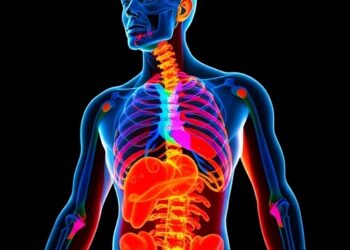A modeling study suggests that one-sided interspecies cooperation can spontaneously emerge and persist over time, despite only one species benefitting. Evolutionary game theory, and the prisoner’s dilemma in particular, are often used to model the evolution of cooperation within a single species. In the prisoner’s dilemma, both parties benefit by cooperating, but the greatest benefit is earned by a defector who plays with a cooperator. The temptation to cheat tends to push players towards defection, even though mutual defection returns a lower payoff to both parties. Christoph Hauert and György Szabó used the prisoner’s dilemma game to model inter-species cooperation, taking as their inspiration mutualisms, such as the relationships between flowering plants and their pollinators or nitrogen-fixing bacteria and the plants in which they live. The authors set up a model of cooperation between two identical species of equal population size with identical generation times situated on two separate lattices, such that interactions occur between species while competition is fiercest within species. This setup could represent the arrangement of microbes in a biofilm. In the model, the individuals are sessile, and each compete with four neighbors of the same species and potentially assist five neighbors of the other species. “Fitter” individuals, in terms of points won, reproduce more often. By adjusting the cost-to-benefit ratio of cooperation, various dynamic patterns of cooperation and defection are produced. For some values of the cost-to-benefit ratio, the authors find an unexpected pattern in which one species consistently cooperates, donating to the other species at a cost to itself, and yet its partner consistently defects, failing to reciprocate. According to the authors, under some conditions, natural selection may favor asymmetric states where one species exploits the other.
A modeling study suggests that one-sided interspecies cooperation can spontaneously emerge and persist over time, despite only one species benefitting. Evolutionary game theory, and the prisoner’s dilemma in particular, are often used to model the evolution of cooperation within a single species. In the prisoner’s dilemma, both parties benefit by cooperating, but the greatest benefit is earned by a defector who plays with a cooperator. The temptation to cheat tends to push players towards defection, even though mutual defection returns a lower payoff to both parties. Christoph Hauert and György Szabó used the prisoner’s dilemma game to model inter-species cooperation, taking as their inspiration mutualisms, such as the relationships between flowering plants and their pollinators or nitrogen-fixing bacteria and the plants in which they live. The authors set up a model of cooperation between two identical species of equal population size with identical generation times situated on two separate lattices, such that interactions occur between species while competition is fiercest within species. This setup could represent the arrangement of microbes in a biofilm. In the model, the individuals are sessile, and each compete with four neighbors of the same species and potentially assist five neighbors of the other species. “Fitter” individuals, in terms of points won, reproduce more often. By adjusting the cost-to-benefit ratio of cooperation, various dynamic patterns of cooperation and defection are produced. For some values of the cost-to-benefit ratio, the authors find an unexpected pattern in which one species consistently cooperates, donating to the other species at a cost to itself, and yet its partner consistently defects, failing to reciprocate. According to the authors, under some conditions, natural selection may favor asymmetric states where one species exploits the other.
A tutorial of the model is available at https://wiki.evoludo.org/index.php?title=Mutualisms:_cooperation_between_species.
Journal
PNAS Nexus
Article Title
Spontaneous symmetry breaking of cooperation between species
Article Publication Date
3-Sep-2024




